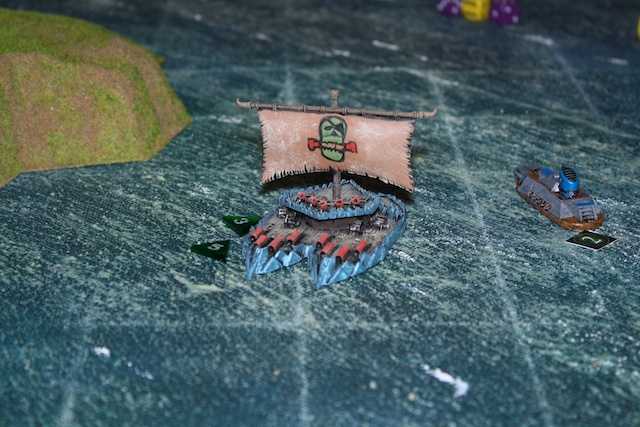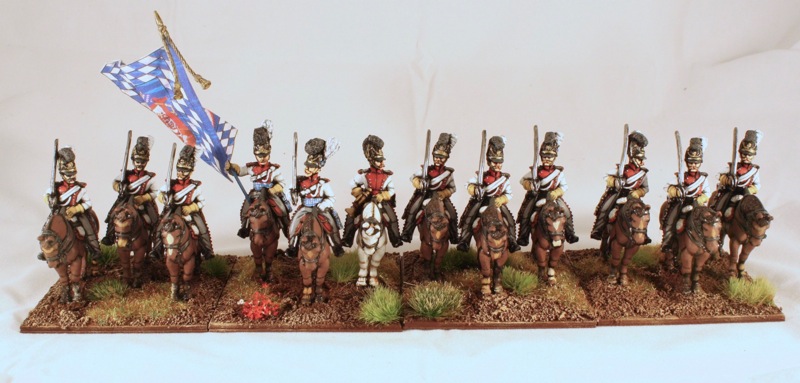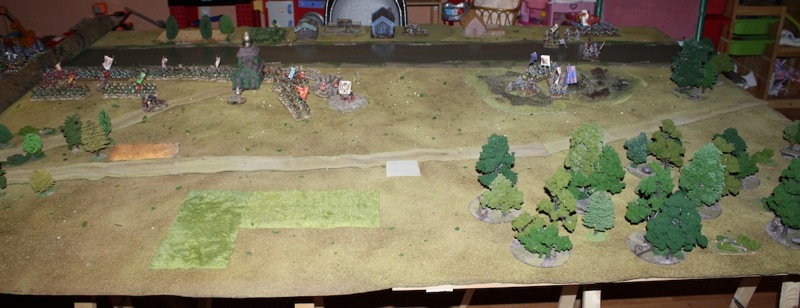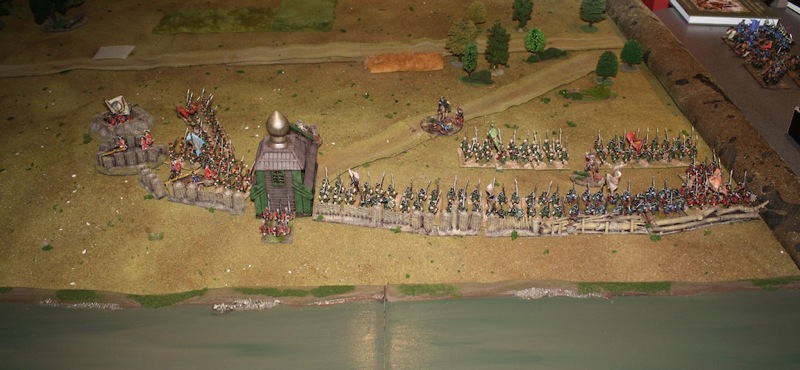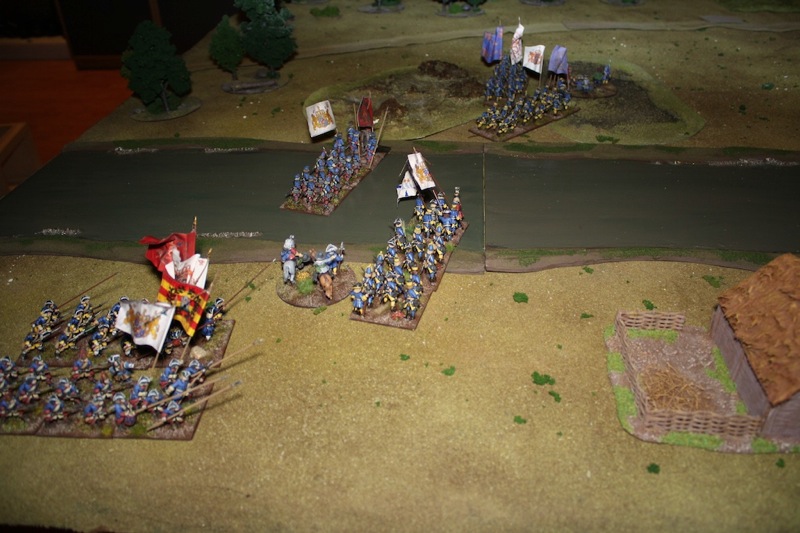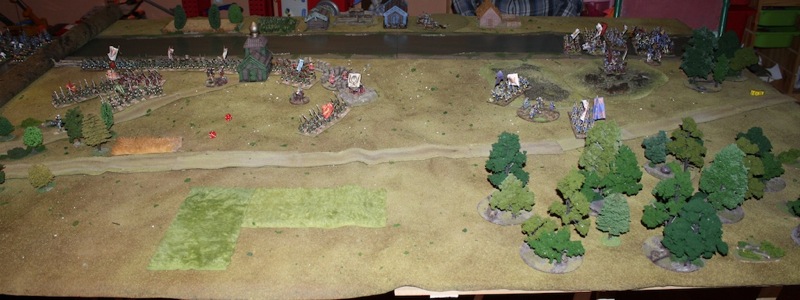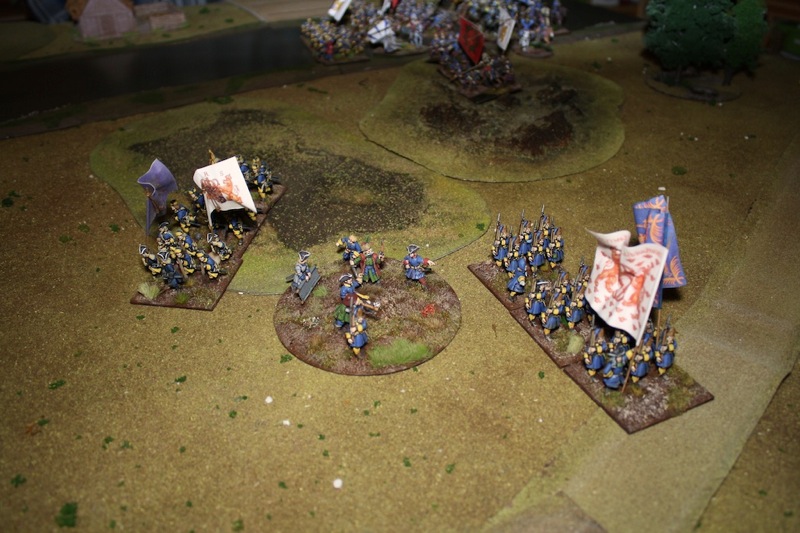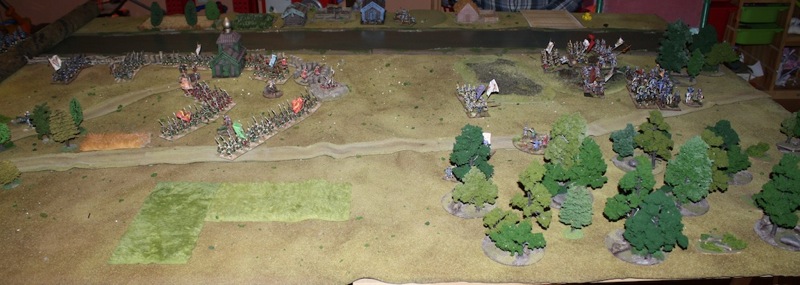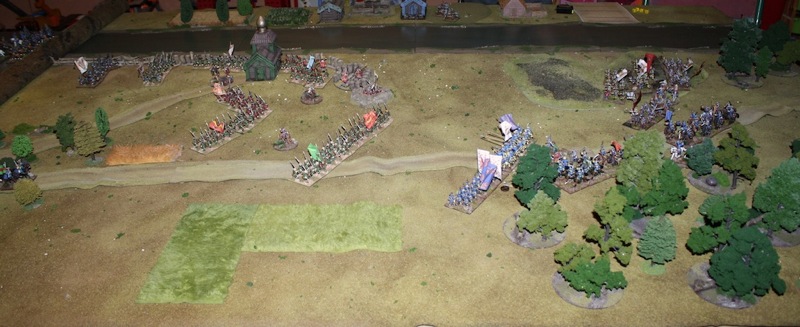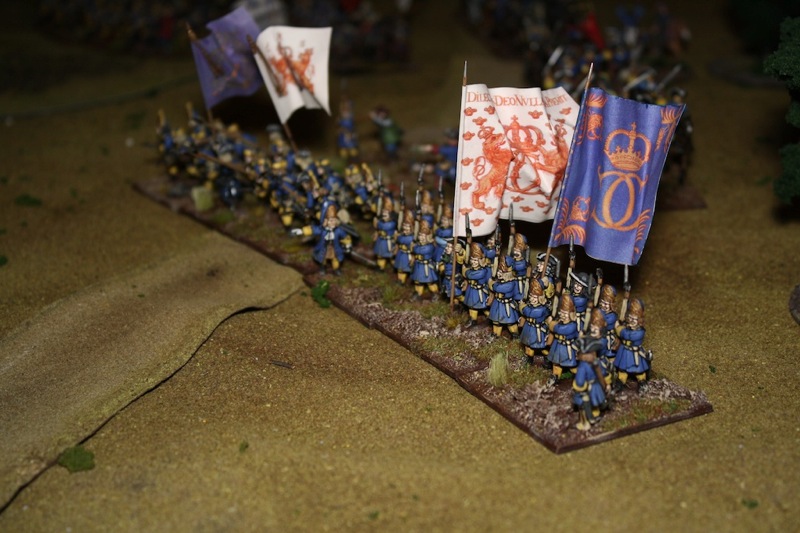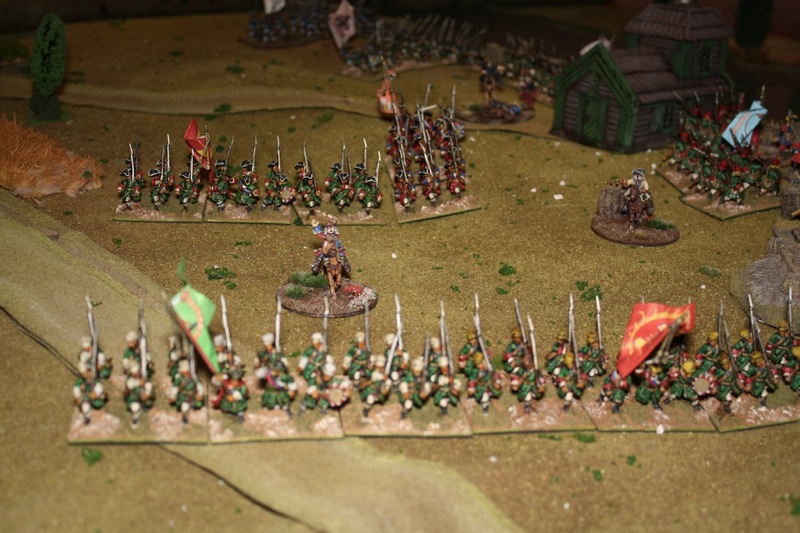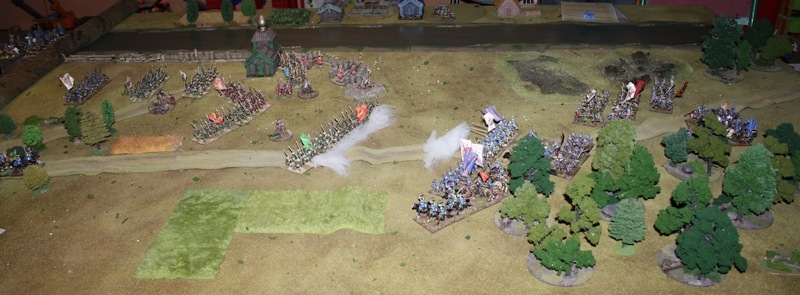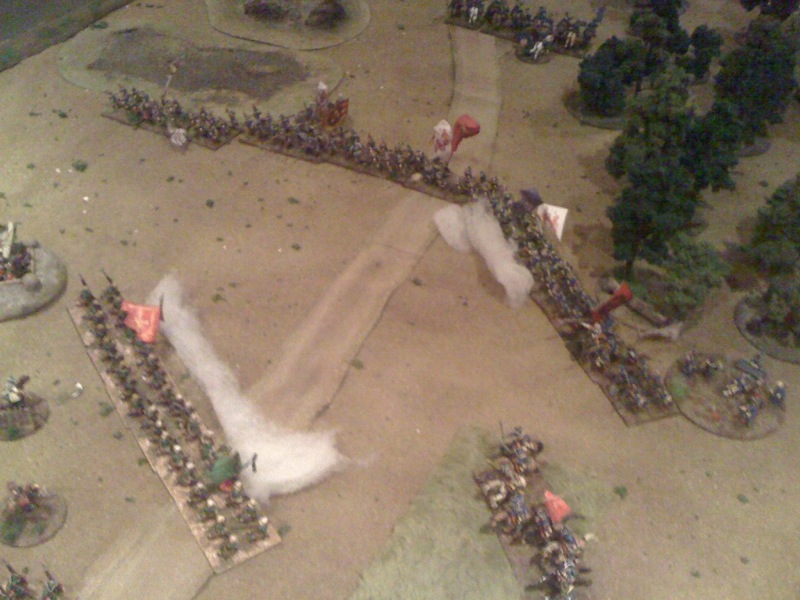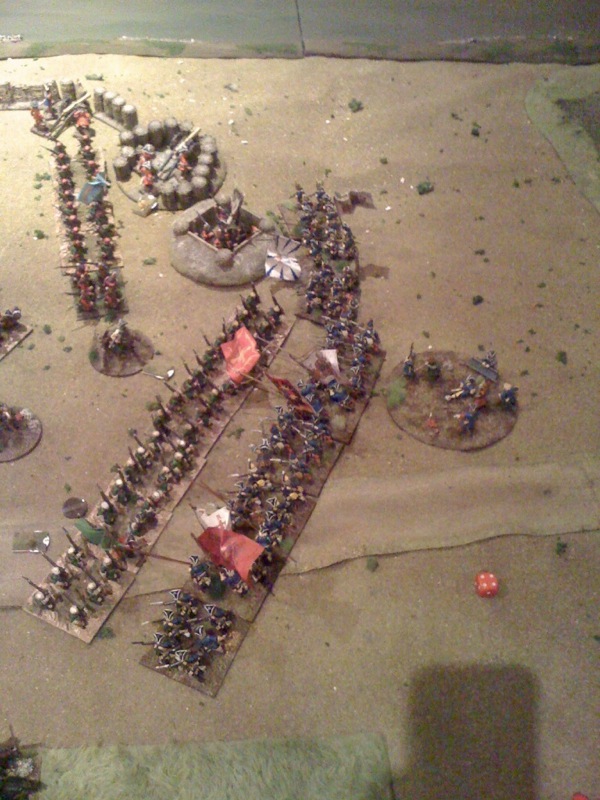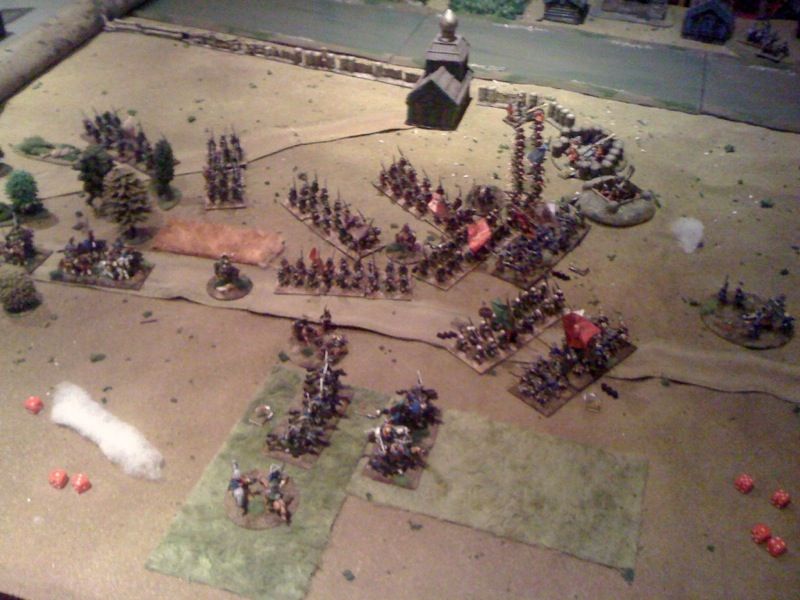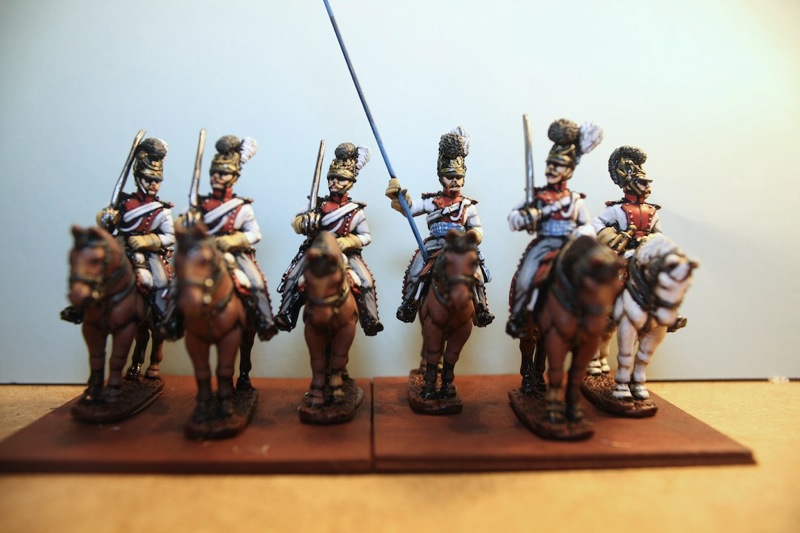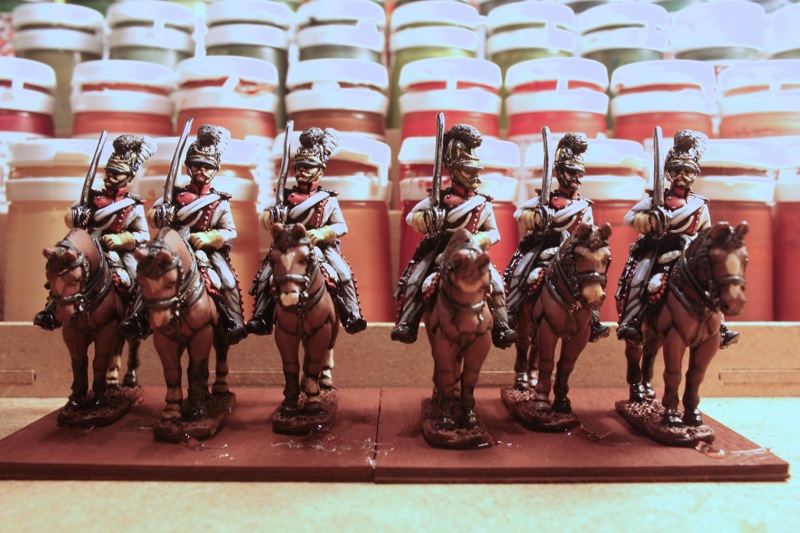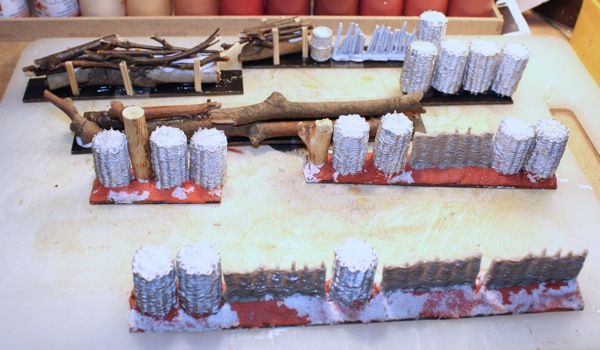Yesterday Alan, Eddy and myself played a game of
Uncharted Seas. We didn't have a scenario but just lined up three fleets and had at it. The three fleets were more or less evenly matched (I used the models I had available and did not bother to work out the point values). Each fleet consisted of a basic starter fleet with some additions (cruisers or flagship):
* Dwarves (Eddy): 1 battleship, 2 assault cruisers, 3 cruisers and 6 frigates
* Orcs (Alan): 1 battleship, 1 battlecruiser, 1 assault cruiser, 3 cruisers, 6 frigates
* Humans (me): 1 battleship, 1 flagship, 3 cruisers, 6 frigates
The game for the Dwarves can be mentioned quite succinctly: they spent most of the game catching up to the action and in the end contended themselves with tangling with the Orcish battlecruiser that had split off the main Orc fleet. The Dwarves managed to sink the battlecruiser by the end of the game.
For my part, I started on the opposite side of the table as the Dwarves so I did not have any interaction with them during the game (we played on an 8x6 foot table). Most of the reason for this was a decision I made after turn one to change the axis of advance of my fleet by 90 degrees to concentrate on the Orcs. The reason for this was that I saw myself ending up between the Orc and Dwarf fleets being shot at by both had I continued on my initial course, and I did not quite fancy such a fate.
So, the main battle for me would be against the Orcs. After we closed up a bit, the frigates got into play when Alan launched his three brace of frigates in an aggressive move towards my cruisers which were leading the fleet. While my frigates had been lurking behind my battle line ready to counterattack such a move -- and did -- by the end of the frigate action, I was down one cruiser which had been decrewed by an assaulting frigate (with some help of long range fire of the Orc battleship). The end of this phase saw all frigates of both sides wiped out (the intrepid frigate that had boarded and decrewed my cruiser was summarily overrun and sank by the
Tears of the Empress' Favorite Concubine, my battleship), two of the Orc cruisers suffering medium damage and one of my cruisers out of action.
Then it was time for the big boys to come out and play. Alan was moving his fleet on a more or less regular (these were Orcs, after all) formation, with his battleship closest to my fleet and the cruisers and assault cruiser in line abreast next to it. He initially did have the wind against him (one factor in my decision to go for the Orcs. I also would like to publicly deny any involvement of my clerics in the change of wind direction -- the mere thought is preposterous :) ) but it turned favourably a bit later only to turn straight into the Orcs' faces in the final turn of the game. My own fleet was in its classic battle line astern: the (now) two cruisers leading, with the
Tears and lastly the
Empress' Cynical Smile (the flagship) following.
While the main fleets were approaching, during and after the frigate action, I was somewhat apprehensive of the Orcish guns and the fact that they are forward firing: this means that for an Orc ship, moving closer to the enemy and presenting your optimum firing stance are the same thing, as opposed to my ships, whose strength is their broadsides. I shouldn't have worried though, as the reason why my battle line is the classic deployment for the humans is that the cruisers, leading the line, take the long range fire on the approach while the big bruisers (the 15 and 14 dice broadsides of the
Empress and
Tears) close up relatively unscathedly to deliver their fire. And that is exactly what happened: my cruisers took some damage closing in (less than expected because of the intervening frigates and small fore arcs of the Orc ships) while Alan's battleship got slightly dinged by (long range) fire from my cruisers and battleship. Then my two big ships came into close range of Alan's battleship (blithely ignoring the Orc cruisers as they would be easy prey once the battleship was gone) and blew it out of the water with their massive broadsides. The aforementioned turning of the wind in the last turn helped as it meant the cruisers suddenly did not have the move to ram my battleships, which might have become nasty. Scratch one Orc fleet.
Some pictures of the game:
The Orc fleet sails onto the table:
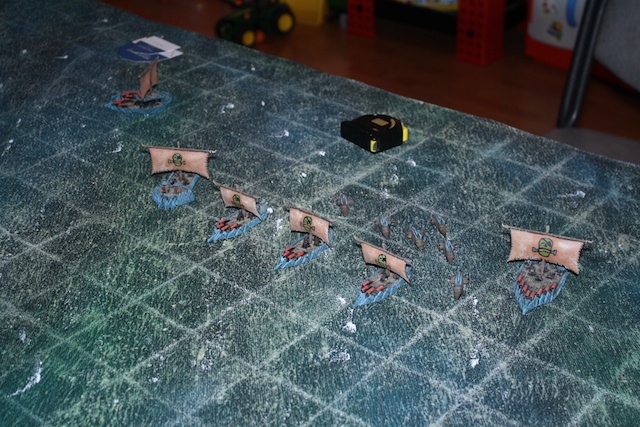
Part of the Dwarven fleet:
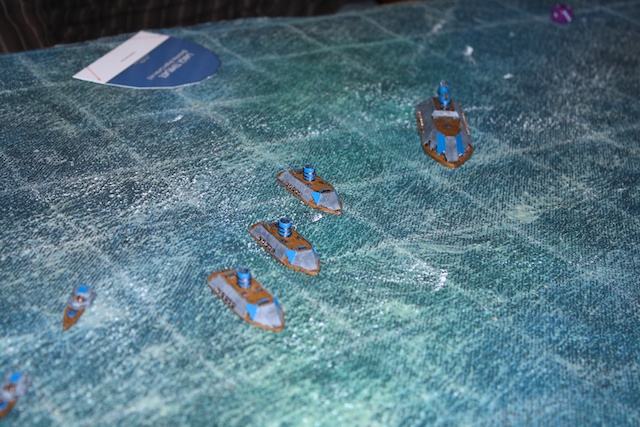
The Human fleet after making its 90 degree turn, with the cruisers racing to overtake the battleship and take their place in the van:
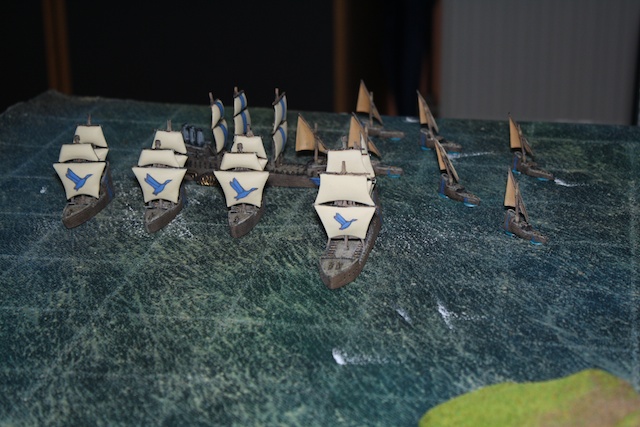
The
Empress' Cynical Smile serenely sails to its place in the line, sheltering a frigate squadron:
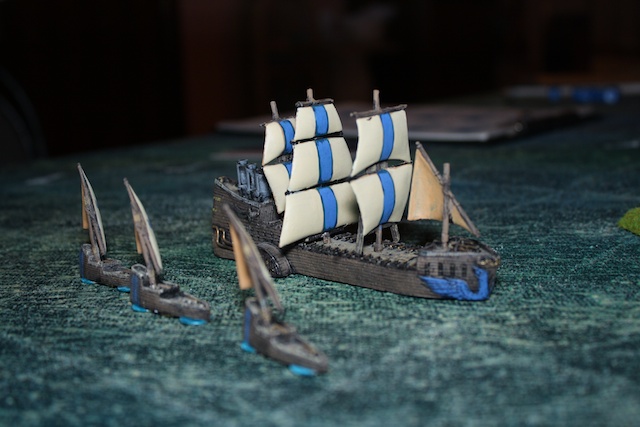
The high point of the frigate action - Orc frigates in an all-out ramming attack. The center one would decrew the Human cruiser:
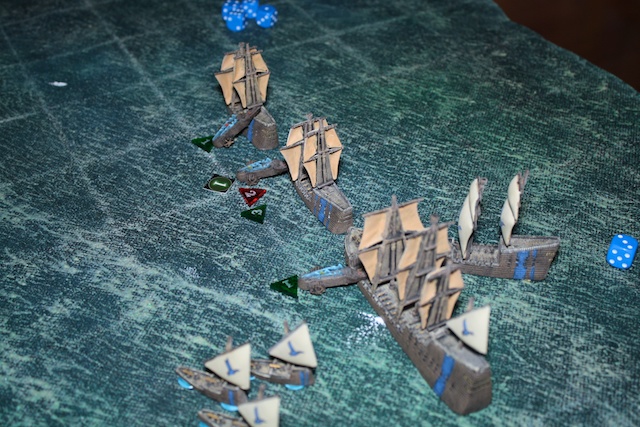
The main battle fleets in close contact. Human cruisers have turned in behind the Orc battleship which is about to be subjected to the broadsides of the Human big ships:
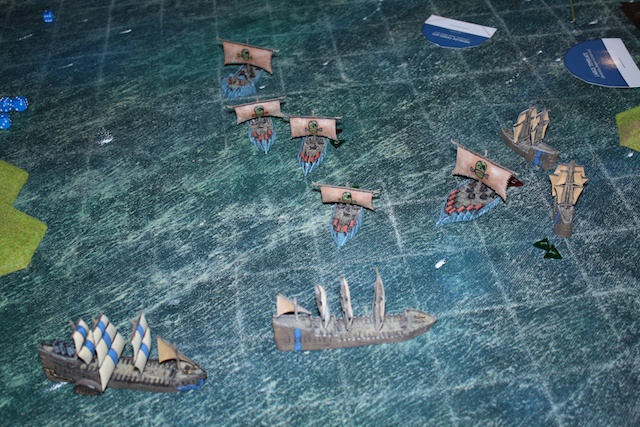
Action on the other side of the table: the Orc battlecruiser in its final moments, besieged by Dwarven firepower:
